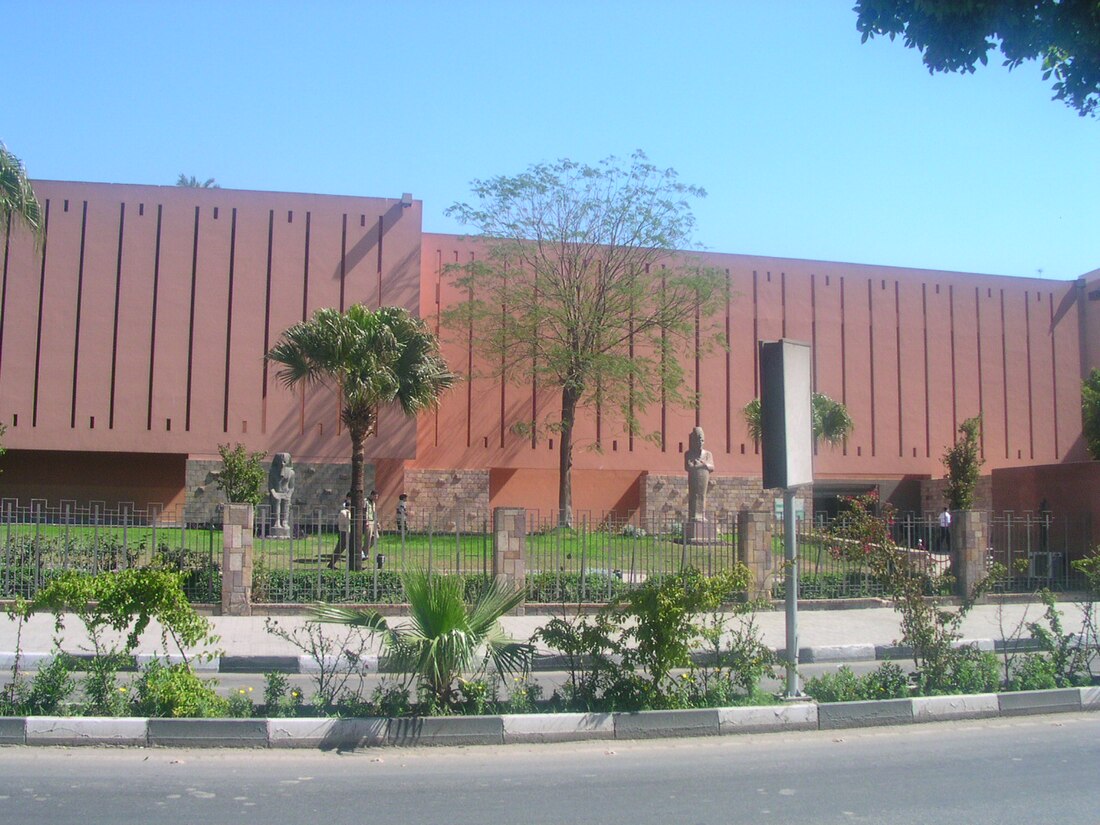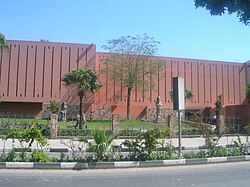Top Qs
Timeline
Chat
Perspective
Luxor Museum
Egyptology, history museum, archaeological museum in Luxor, Egypt From Wikipedia, the free encyclopedia
Remove ads
Luxor Museum is an archaeological museum in Luxor (ancient Thebes), Egypt.[1] It stands on the corniche, overlooking the east bank of the River Nile.[2]
Establishment
The Luxor Museum was inaugurated in 1975. It is a two-story building.[2] The range of artifacts on display is far more restricted than the country's main collections in the Egyptian Museum in Cairo; this was, however, deliberate, since the museum prides itself on the quality of the pieces it has, the uncluttered way in which they are displayed, and the clear multilingual labeling used.[citation needed]
The museum was conceived by the Egyptian Ministry of Culture, which hired Dr. Mahmud El Hakim, a top Egyptian architect, to create the plans in 1962.[2] The installation of the museum art works came later and was finished between 1972 and 1975.[2]
Remove ads
Collection
Among the items on display are grave goods from the tomb of the 18th dynasty pharaoh Tutankhamun (KV62) and a collection of 26 New Kingdom statues that were found buried in the Luxor statue cache in the nearby Luxor Temple in 1989. The royal mummies of two pharaohs – Ahmose I and Ramesses I – were also put on display in the Luxor Museum in March 2004, as part of the new extension to the museum, which includes a small visitor centre. A major exhibit is a reconstruction of one of the walls of Akhenaten's temple at Karnak. One of the featured items in the collection is a calcite double statue of the crocodile god Sobek and the 18th Dynasty pharaoh Amenhotep III.[2]
- Amenhotep III; circa 1390-1352 BC; quartzite; height: 2.49 m[4]
- Scribe statue of Amenhotep, son of Hapu; circa 1390-1352 BC; granodiorite; height: 1.3 m; from Karnak (Egypt)[5]
Remove ads
See also
References
External links
Wikiwand - on
Seamless Wikipedia browsing. On steroids.
Remove ads





